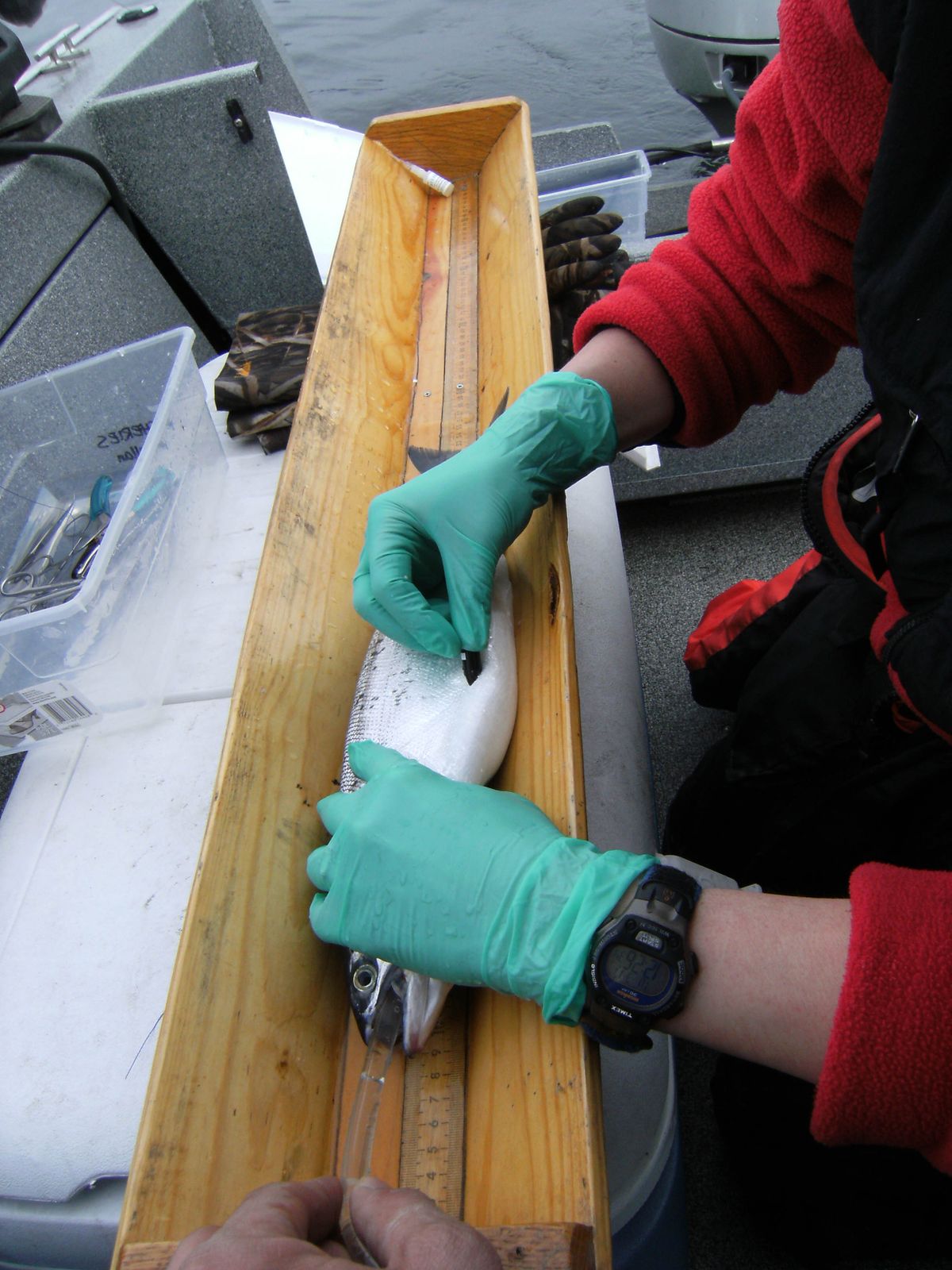Kokanee researchers resort to hook and line

In Lake Roosevelt last week, there was no clear line between research and kokanee fishing.
“We had to use hook and line to catch the mature fish we would need for implanting transmitters,” said Holly McLellan, a researcher from Eastern Washington University. “You can’t really use nets for kokanee because they’re out in the middle of the lake, besides they wouldn’t survive being caught in nets.”
So she joined several boats operated by volunteer sportsmen, Fish and Wildlife Department staffers and members of the Spokane Tribe for the job of catching at least 25 kokanee.
Each fish was anesthetized before an incision was made in the abdominal cavity in order to implant a transmitter. The hole was stitched shut, the fish revived and released so researchers could follow their movements for the rest of the year.
The most immediate finding of importance to anglers was that the fishing was excellent, McLellan said, noting that they easily caught the kokanee they needed.
The implanted fish ranged from 18 to 25 inches long, and that’s no fish story. This is a report from a scientist who actually used a tape measure.
The best kokanee fishing action was near Spring Canyon and Swawilla Basin, although the fishing was good near Keller Ferry and the mouth of the Sanpoil, she said.
“Pink was the hot color for the flies they trolled,” she said, noting that they were fishing with monofilament line in the top 5 feet of water.
The researchers go after the fish they need for their study this time of year for good reason.
“The water is cool and the fish are near the surface so we’re not pulling them up from the depths,” she said. “That increases the survival rates for fish being caught and released.”
The group logged its best fishing success from 7- 9 a.m. and 3-5 p.m., she said. “But we caught fish all day long.”